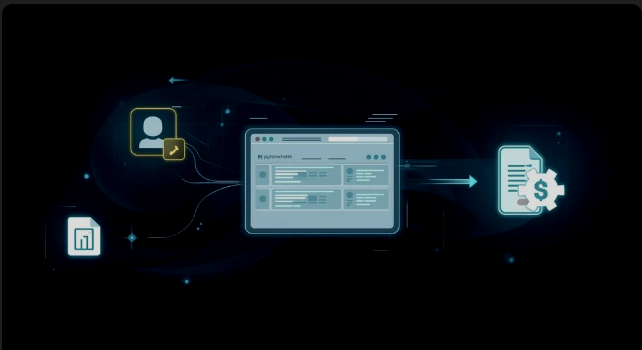What would you do if your mum leaves when you’re 11, your dad leaves you at 13, you then lived with your grandma who dies when you’re 16, and you then marry a man who beats you for the next 16 years until you attempt suicide and fail?
If you are Tina Turner, you go on to start a new life, sell 200 million records and break the Guinness Book of Records for selling the most concert tickets of any solo performer in history.
Tina’s mother ran away when Tina was 11, to escape the abuse of her father. As she remembers, “I thought she was going to send for me, but she never did. She didn’t have the money to take my sister and me with her.”
Two years later, her father abandoned Tina as well, and she went to live with her grandmother. Three years later, her grandmother died and Tina had to seek out her mother. She says, “My mother didn’t want a child, so I experienced being unwanted. But I found love when I was with myself. I went with nature, with animals, and I found love and harmony. I would come home at the end of the day—braids pulled out, my dress torn—and of course I got asked, “Where have you been all day!?” But I had been in a world of love and happiness.”
When she was 18, Tina met Ike Turner, who was singing with his band, the Kings of Rhythm. After a few years together, by a piece of luck, Tina got her wish to sing when Kings of Rhythm vocalist, Art Lassiter, failed to show up at the recording studio. Tina stood in for him, and the song she sang, “A Fool in Love” found its way to R&B label, Sue Records, who bought the rights and launched Tina’s singing career.
But Ike had already begun abusing her, hitting her often while on cocaine, pouring hot coffee on her face, and burning her lips with cigarettes. It led Tina to attempt suicide in 1968, taking 50 valium only for the hospital to pump her stomach and for her to revive with Ike at her side.
Tina says, “When I look back on that time now, it was just hell. So why didn’t I walk out? I had nowhere to go. I didn’t have money—and neither did my mother. We hadn’t had a hit for a while. He was spending most of the money on drugs. Expenses were mounting. I was upset because I wasn’t receiving a dime.”
In 1974, at 34 years old, Tina turned to Buddhism: “The women who sold drugs to Ike said, “What are you doing here, Tina? How can you live with this madness?” Then one day, someone told me, “Buddhism will save your life.” I was willing to try anything. I started to chant. Once, I chanted, went to the studio, and put down a vocal, just like that. Ike was so excited that he gave me a big wad of money and said, “Go shopping!” I thought, “This chanting stuff works.”
The abuse continued, but Tina began chanting for three hours every day: “Nam-myoho-renge-kyo”
Tina explains: “Nam-myoho-renge-kyo” is a song. It is a sound and a rhythm and it touches a place inside you. I believe that it is the highest place and, if you communicate with it, that is when you receive information on what to do.”
What does the four-word buddhist chant mean? “Nam” is devotion. “Myo” is mystic. “Ho” is law. “Renge” means lotus blossom. “Kyo” means sutra. The message in the chant is that those who live normal lives but persevere will eventually triumph.
It was a full 16 years of abuse – and 2 years of chanting – before Tina left Ike forever in 1976. “When I started chanting is when I started using my head. I started thinking, “I’m not going to kill myself, there’s nothing here for me. This person doesn’t realize that I am helping him, that I have tried to be good and kind.”
One night, after a violent and bloody row, she escaped with 36 cents in her pocket and fled to Los Angeles. She went for months living on food stamps, cleaning houses and singing in bars. Then, Ike found her: “When he finally found me, he asked if I would see him. I went out and sat in the car to talk with him. I knew exactly where the door handle was. So when he said, “You motherf—er,” I was out of the car and back in the house. I think he told my mother that he was happy I’d gotten out of the car because he had a gun and was planning to kill me.”
It took another two years to get a divorce, leaving her with even more debt from cancelled shows and unpaid taxes. Then, it took eight more years, until 1984, before Tina had her first solo album, “Private Dancer. The record sold more than 10 million copies and she won three Grammys.
Tina was 44 years old, and her new #1 song “What’s Love Got to Do with It” made her the oldest female artist to have a US number one hit.
From there, everything took off. At her 1988 Break Every Rule tour, Tina broke the world record for the largest paying audience at a solo concert – 184,000 people, at the Maracanã in Rio de Janeiro. For the next 12 years, the combination of her hit songs and concerts gave her the title “The Queen of Rock’n’Roll”, and culminated in the Twenty Four Seven Tour in 2000. She rocked it at 60 years old, grossed over $100 million and the Guinness Book of Records awarded Tina the record for the most concert tickets sold by any solo performer in history.
Tina says “I didn’t have anybody, really, no foundation in life, so I had to make my own way. Always, from the start. I had to go out in the world and become strong, to discover my mission in life. My legacy is that I stayed on course… from the beginning to the end, because I believed in something inside of me.”
Nam-myoho-renge-kyo
What message from Tina’s life resonates with you? What noise on the outside is drowning out the voice inside? What do you need to give up to claim your own legacy?
In 2013, Tina appeared on the German issue of Vogue Magazine, becoming the oldest person worldwide to appear in Vogue. Asked what her beauty secret was, she said “My greatest beauty secret is being happy with myself.”
Today, Tina is still performing. She is now 76 years old.

















Leave a Reply